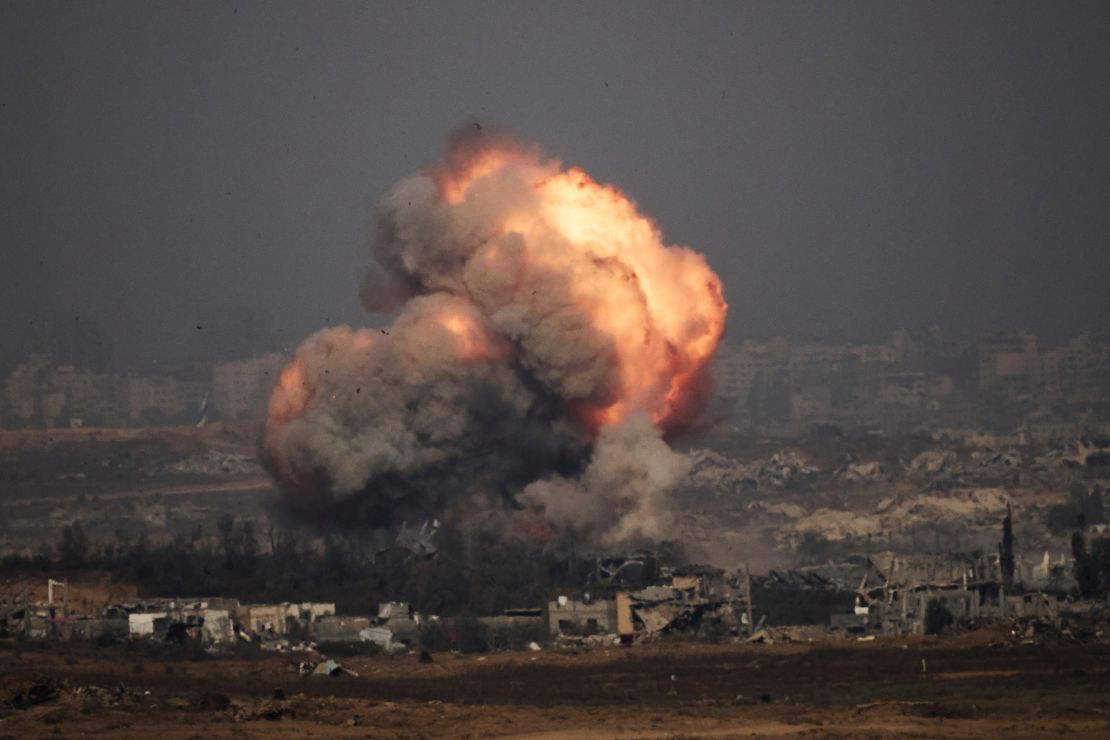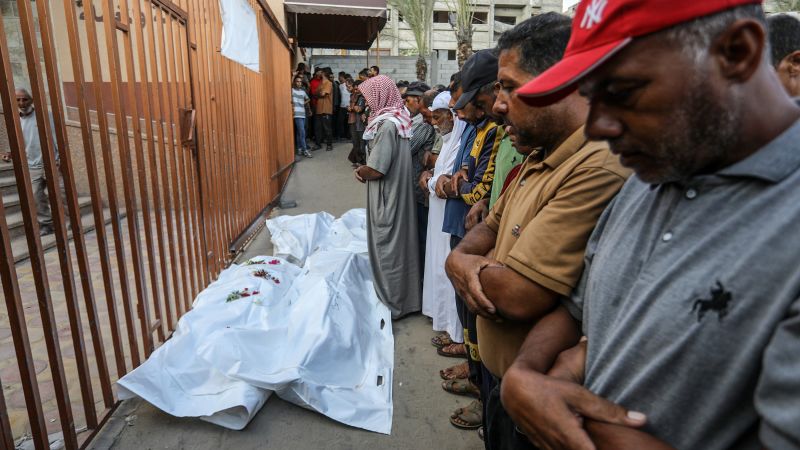CNN
—
The talks on a new ceasefire for Gaza have stuttered in Doha – while in Gaza itself dozens of people are being killed every day as the Israeli military consolidates its control over large parts of the territory.
Hope had been high for the latest negotiations but after days of negotiations the two sides accused each other of blocking an agreement while on the ground there has been no let-up in Israel’s military campaign, which resumed when the last ceasefire collapsed in March.
The Palestinian health ministry reported Sunday that 139 bodies had been brought to Gaza hospitals in the past 24 hours, with a number of victims still under the rubble. The number is the highest reported since July 2.
The ministry said the latest casualties brought the total number of people killed since October 7, 2023 to 58,026.
In just one incident on Saturday, the ministry said 27 were killed and many more injured when Israeli troops opened fire on people trying to obtain aid from a distribution site near southern Rafah run by the US-backed Gaza Humanitarian Foundation (GHF).
GHF denied the claim, saying “there were no incidents at or in the immediate vicinity of our sites” on Saturday.
The Israeli military also denied that anyone was injured by gunfire from its troops in the vicinity of the site but said it continued to review the reports. It told CNN Sunday it had no further comment.
However, the International Committee of the Red Cross (ICRC) said its field hospital near the site had received 132 patients suffering from weapon-related injuries. Twenty-five were declared dead on arrival and six more died after being admitted – the largest number of fatalities since the hospital began operations in May 2024, according to the ICRC.
“This situation is unacceptable. The alarming frequency and scale of these mass casualty incidents underscore the horrific conditions civilians in Gaza are enduring,” the ICRC added.
Nearly 800 Palestinians were killed while trying to access aid in Gaza between late May and July 7, according to the Office of the UN High Commissioner for Human Rights (OHCHR), when the GHF began operating.

Elsewhere in Gaza, 13 people were killed Saturday in airstrikes in Al-Shati refugee camp near Gaza City, in the north of the territory, according to Mohammed Abu Salmiya, director of Al-Shifa Hospital. Salmiya told CNN that 40 injured people had been admitted. Geolocated video showed at least one child among the victims.
On Sunday morning, six children were among ten people killed in an airstrike close to a water distribution site in Nuseirat in central Gaza, according to Al-Awda Hospital. It said it had received 16 injured people. Also in central Gaza, 11 people were killed and more than 50 injured when an Israeli airstrike targeted a crowded junction in central Gaza City, according to Civil Defense officials.
The Israel Defense Forces said Sunday it had destroyed weapons and tunnels used by Hamas in northern Gaza and the air force had carried out attacks on more than 150 targets across the Gaza Strip, including “booby-trapped buildings, weapons depots, anti-tank missile and sniper positions.”
The spike in casualties in Gaza comes as talks on agreeing a new ceasefire deal and hostage continue in Doha, with optimism having faded that an agreement can be quickly reached.
US President Donald Trump’s envoy Steve Witkoff said Tuesday he was hopeful of a deal by the end of the week.
“We had four issues, and now we’re down to one after two days of proximity talks,” Witkoff said.
The same day Trump and Israeli Prime Minister Benjamin Netanyahu discussed Gaza at length at the White House.
“We got to get that solved,” Trump said.
But despite days of proximity talks in Doha between Israel and Hamas, significant gaps remain between the warring parties.
An Israeli source familiar with the matter said last week that the outstanding issue was where the Israeli military would redeploy in Gaza once the ceasefire takes effect. The latest proposal called for the military to withdraw from parts of northern Gaza on the first day of a ceasefire and from parts of southern Gaza on the seventh day.
The detailed maps were left to negotiations between Israel and Hamas, and that appears to be the main sticking point.

The talks had “stalled,” a senior Hamas official told CNN on Saturday, claiming Israel had added new conditions, “the latest being new deployment maps for the Israeli army’s presence in the Gaza Strip.”
But an Israeli political source told CNN Saturday that “Israel has shown willingness to be flexible in the negotiations” and that “Hamas remains obstinate, sticking to positions that prevent the mediators from advancing an agreement.”
Netanyahu is set to meet Sunday with his national security minister, Itamar Ben-Gvir, to discuss the negotiations, according to a source familiar with the matter.
Ben Gvir and finance minister Bezalel Smotrich – the far-right members of Netanyahu’s government – have both been vocal critics of any deal with Hamas, instead calling for Israel to cut off aid to Gaza and escalate its war until the militant group is destroyed.
Recent opinion surveys in Israel suggest overwhelming approval for a deal that would end the war and return all the hostages, living and dead. A poll for Israel’s Channel 12 Friday said that 74% of the public believes that Israel should end the war in Gaza in exchange for the return of all the abductees in one step, with only 8% supporting the phased deal that the government is trying to promote.
Netanyahu has insisted that Israel has the right to return to combat at the end of the 60-day ceasefire now on the table. Hamas is demanding a pathway to an indefinite cessation of hostilities, with the complete withdrawal of Israeli forces from Gaza.

